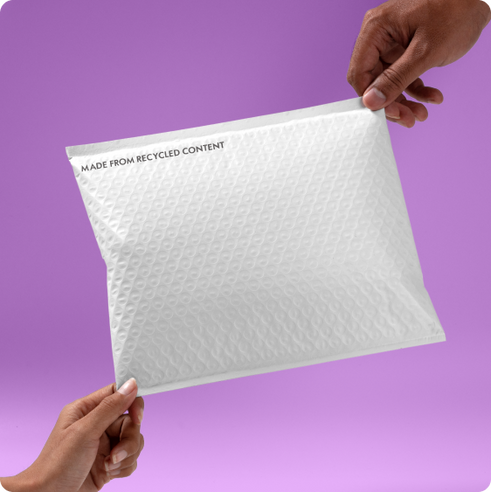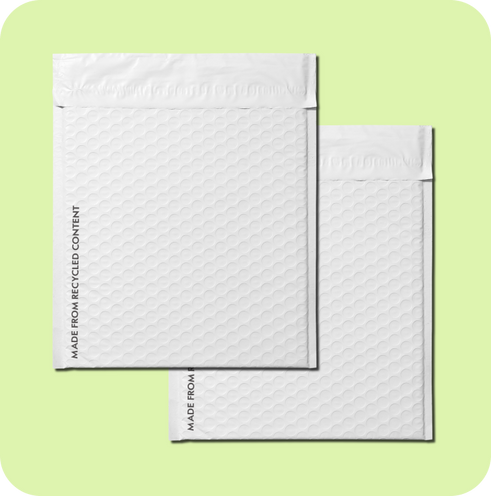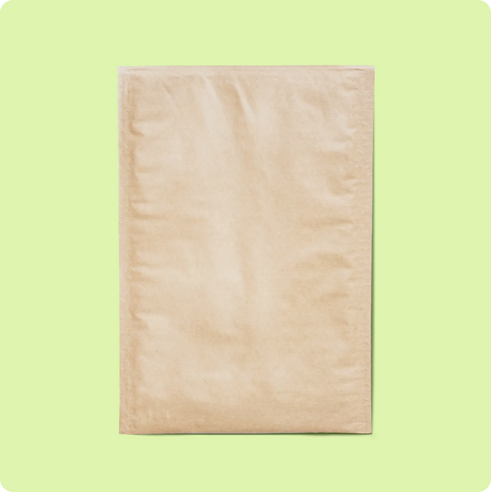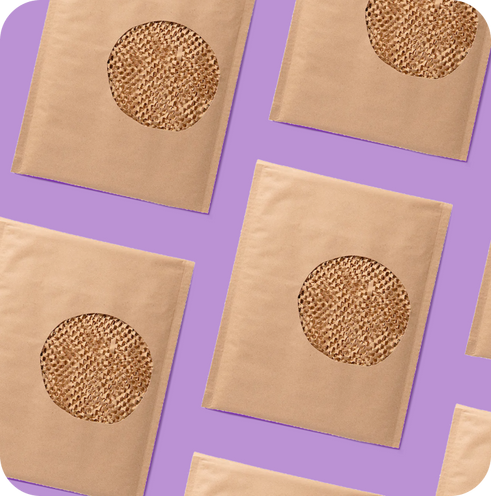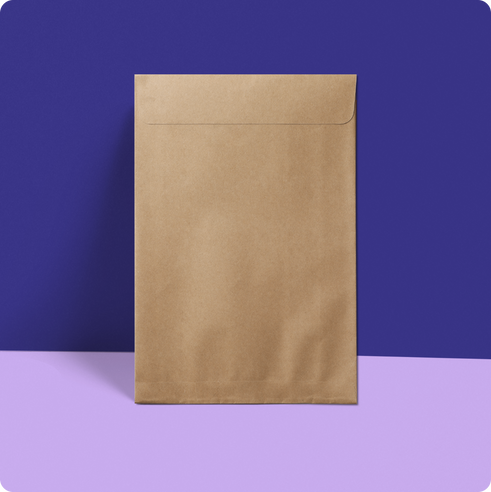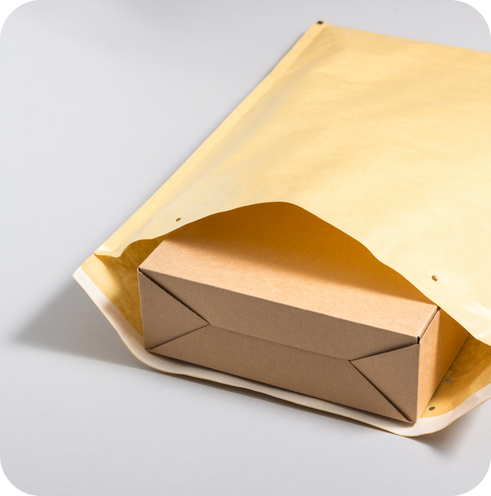Packaging 101: The Complete Guide
- Packaging 101
- Types of Packaging
- Aseptic Packaging
- Blister Packaging
- Biodegradable Packaging
- Bulk Packaging
- Carbon Neutral Packaging
- Circular Packaging
- Clamshell Packaging
- Compostable Packaging
- Cornstarch Packaging
- Corrugated Packaging
- Discreet Packaging
- Ecommerce Packaging
- Flexible Packaging
- Frustration Free Packaging
- Retail Packaging
- Secondary Packaging
- Smart Packaging
- Sustainable Packaging
- What is a PR Package?
- What is a Poly Mailer?
- Packaging Design Ideas
- AI Packaging Design
- Bakery Packaging Ideas
- Bath Bomb Packaging Ideas
- Bath Salt Packaging Ideas
- Body Butter Packaging Ideas
- Body Oil Packaging Ideas
- Body Scrub Packaging Ideas
- Brownie Packaging Ideas
- Cake Packaging Ideas
- Cake Pop Packaging Ideas
- Candle Packaging Ideas
- Candy Packaging Ideas
- Canva Packaging Design
- Chocolate Packaging Ideas
- Cinnamon Roll Packaging Ideas
- Clothing Packaging Ideas
- Coaster Packaging Ideas
- Coffee Bag Design Ideas
- Cookie Packaging Ideas
- Cosmetics Packaging Design
- Cotton Candy Packaging Ideas
- Cupcake Packaging Ideas
- DIY Packaging Ideas
- Dog Treat Packaging Ideas
- Food Packaging Ideas
- Empanada Packaging Ideas
- Etsy Packaging Ideas
- French Fries Packaging Ideas
- Frozen Food Packaging Ideas
- Hair Extension Packaging Ideas
- Handbag Packaging Ideas
- Jewelry Packaging Ideas
- Keychain Packaging Ideas
- Lash Packaging Ideas
- Lip Gloss Packaging Ideas
- Macaron Packaging Ideas
- Minimalist Packaging Ideas
- Mug Packaging Ideas
- New Employee Welcome Kit Ideas
- Packaging Colors
- Packaging Inserts Ideas
- Packaging Logo Design
- Packaging Typography
- Perfume Box Design Ideas
- Pizza Box Design Ideas
- Popcorn Packaging Ideas
- Scarf Packaging Ideas
- Skincare Packaging Design Ideas
- Soap Packaging Ideas
- Sock Packaging Ideas
- Sticker Packaging Ideas
- Sunglass Packaging Ideas
- Sustainable Packaging Ideas
- Tea Packaging Ideas
- Wax Melt Packaging Ideas
- Weed Packaging Ideas
- T-Shirt Packaging Ideas
- Wine Packaging Design Ideas
- What is a Packaging Engineer?
- Types of Packaging Materials
- Chipboard vs Cardboard
- Compostable Packaging Materials
- Alternatives to Plastic Packaging
- Edible Packaging Materials
- Food Packaging Materials
- Are Poly Mailers Recyclable?
- How to Recycle Cardboard Boxes
- How to Recycle Packaging Materials
- Medical Device Packaging Materials
- Mono Material Packaging
- Pharmaceutical Packaging Materials
- Plastic Food Packaging
- Protective Packaging Materials
- Reusing Packaging Materials
- Types of Packaging Foam
- Void Fill Packaging
- What is Chipboard?
- What is Kraft Paper?
- Offset vs Digital Printing
- RGB vs CMYK Printing
- Screen Printing vs Digital Printing
- Screen Printing vs Sublimation
- What is a Dieline in Packaging?
- What is Die Cutting?
- What is Digital Printing?
- What is Flexographic Printing?
- What is Glassine Paper?
- What is Offset Printing?
- What is Spot UV Printing?
- Why is 300 DPI Good for Printing?
- How to Estimate Shipping Costs
- How to Pack Glass for Shipping
- How to Mail a Bubble Mailer
- How to Make a Shipping Label
- How To Measure Box Dimensions and Sizes
- How to Ship Alcohol
- How to Ship Artwork
- How to Ship Books
- How to Ship a Cake
- How to Ship Candles
- How to Ship Clothes
- How to Ship Cookies
- How to Ship Food
- How to Ship a Laptop
- How to Ship a PC
- How to Ship Plants
- How to Ship Shoes
- How to Ship Vinyl Records
- Packaging Symbols
- Shipping Large Items
- What is a Delivery Exception?
- What is Shipping Insurance?

Britt Martin, Arka's Partnerships lead, blends e-commerce expertise with sustainability advocacy, nurturing startups as a Founder in Residence at NYU.
What is Cornstarch Packaging? Understanding the Basics
Many people wonder, “what is cornstarch packaging”; well, cornstarch (or cornflour) is a thickening agent, and cornstarch packaging is a type of biodegradable packaging material made from a combination of cornstarch, sugar (or glycerin), and water. Cornstarch packaging is an alternative to using polystyrene and plastic packaging options. This is because cornstarch packaging is biodegradable, compostable, and carbon neutral, so it doesn’t generate waste and high carbon emissions. Cornstarch packaging is commonly used for food on the go.
How is Cornstarch Packaging Made?
Cornstarch packaging is created when cornstarch and sugar are mixed together and subjected to the fermentation process - where chemical breakdown occurs. Then, the shape of the packaging is molded and set while cooling down. During the production process, fewer greenhouse gases are produced.
Key Pros and Cons of Cornstarch Packaging
There are benefits and disadvantages of cornstarch packaging to consider when deciding if this is the type of packaging you’d like to use for your business.

Credits: Nayana Gupta, Bizongo
Benefits of Cornstarch Packaging
Here are the benefits of using cornstarch packaging:
• Cornstarch packaging is 100% biodegradable. This means that the material naturally breaks down and dissolves into small components in an ecosystem, thanks to microorganisms. Cornstarch packaging can take as little as 90 days to biodegrade when disposed of correctly.
• Cornstarch packaging is 100% recyclable, and this is good because this can be remade into new materials and products instead of going to waste and adding to the increasing problem of landfills and pollution.
• Cornstarch packaging comes with no potentially harmful toxins. Cornstarch packaging produces no harmful toxins from production to usage, so it doesn’t pollute the environment with bad chemicals during production and after the biodegradable process. Also, this makes cornstarch packaging a good choice for food takeaways and storage because the lack of chemicals means that there’s hardly any chance of cross-contamination.
• Cornstarch packaging doesn’t generate carbon emissions. By opting into using cornstarch packaging for your business, you can reduce your carbon footprint because production and the biodegradable processes don’t generate waste and greenhouse gases.

Credits: Danilo Saito, Maira Kondo, Akira Mizutani, Lau Bellesa & Mariana Mascarenhas.
Challenges and Limitations of Cornstarch Packaging
Here are some challenges and limitations of using cornstarch packaging for your business:
• Infrastructure: There’s not much infrastructure for many businesses to support cornstarch packaging because it is a relatively new concept. However, this might improve when more businesses and consumers use this type of packaging more frequently.
• Issues with recycling: Further down the line, recycling cornstarch packaging might be difficult further down the line, making it less sustainable. Cornstarch packaging is biodegradable, compostable, and recyclable. However, it needs to be disposed of correctly; otherwise, it could end up in a landfill, which completely defeats the purpose.
• Moisture sensitivity: Cornstarch packaging is great to use for takeaway food, but the heat from the moisture may cause the packaging to become a little bit soggy in texture because it can’t withstand too much moisture.
• High production costs: Producing cornstarch packaging costs a lot of money, which might not be feasible for some businesses, especially SMEs and start-ups.
Why You Should Switch to Cornstarch Packaging
Despite the challenges, here are some of the reasons why your business should switch to cornstarch packaging.
Using cornstarch packaging is an effective way to enhance brand image and show consumers that you care about being eco-friendly. Cornstarch packaging is normally plain, but it can make your brand look impressive to consumers.

Credits: Deda Designs
By adopting cornstarch packaging as a packaging solution for your business, you can contribute to the environment. Using it means less waste, reducing your carbon footprint, and using packaging that contains biodegradable and compostable packaging materials that dissolve and enhance the ecosystem.
If you run a food takeaway business, using cornstarch packaging can help you to comply with regulations. Serving food comes with a whole host of rules you must follow to ensure the safety and care of your customers. With cornstarch packaging, you don’t have to worry about toxins contaminating the food you serve because cornstarch packaging doesn’t produce harmful chemicals in the production process or when it’s in use.
Using cornstarch packaging is a way to help your business meet consumer demand. These days, more customers are conscious of climate change and sustainability, so by using cornstarch packaging, you are aligning with the typical consumer’s values. Also, it is a quick and easy way to serve food, which is handy for the lunchtime rush!
How to Recycle Cornstarch Packaging
Cornstarch packaging needs to be recycled properly so that it doesn’t end up in a landfill or generate waste. Here’s a helpful step-by-step guide to help you with the correct process:
1. First of all, check the labeling on the cornstarch packaging. If it’s marked as PLA (polylactic acid), it is biodegradable and compostable. You can add this to your compost heap or send it to an industrial compost center.
2. To recycle cornstarch packaging, it’s important to separate this from regular recyclable items to prevent mixing and contamination within the recycling stream.

Credits: thedieline.com
3. Check your local area for rules on recycling cornstarch packaging and see if it can be included in recycling collections.
4. Alternatively, take the cornstarch packaging to a recycling center to recycle it properly.
Final Thoughts
All in all, using cornstarch packaging is one way to go green and be more eco-friendly. It’s a better alternative to using plastic packaging because it produces less carbon emissions and it is biodegradable and compostable. Also, it’s the type of packaging that’s ideal for takeaway food because of its lack of toxins - and therefore, less chance of chemical contamination of food.
FAQs on Cornstarch Packaging
Here are some frequently asked questions about cornstarch packaging.
Can biodegradable cornstarch packaging go anywhere?
We know that cornstarch packaging is biodegradable, but can biodegradable cornstarch packaging go anywhere? It’s important to remember to dispose of cornstarch packaging correctly so that it degrades properly and quickly, otherwise it might end up in a landfill.
Is cornstarch packaging good for food packaging?
If you operate a food business and sell food on the go, you’re probably wondering, “is cornstarch packaging good for food packaging?” The answer is yes. Cornstarch packaging doesn’t produce harmful toxins or chemicals, so it’s safe to use with food products because there’s less likely to be an instance of cross-contamination.
Is cornstarch packaging compostable?
Is cornstarch packing compostable if it is eco-friendly and biodegradable? Yes! Cornstarch packaging is biodegradable, carbon neutral, and compostable, so it generates zero waste, dissolves quickly, and leaves minerals in the soil to form compost when disposed of correctly.

